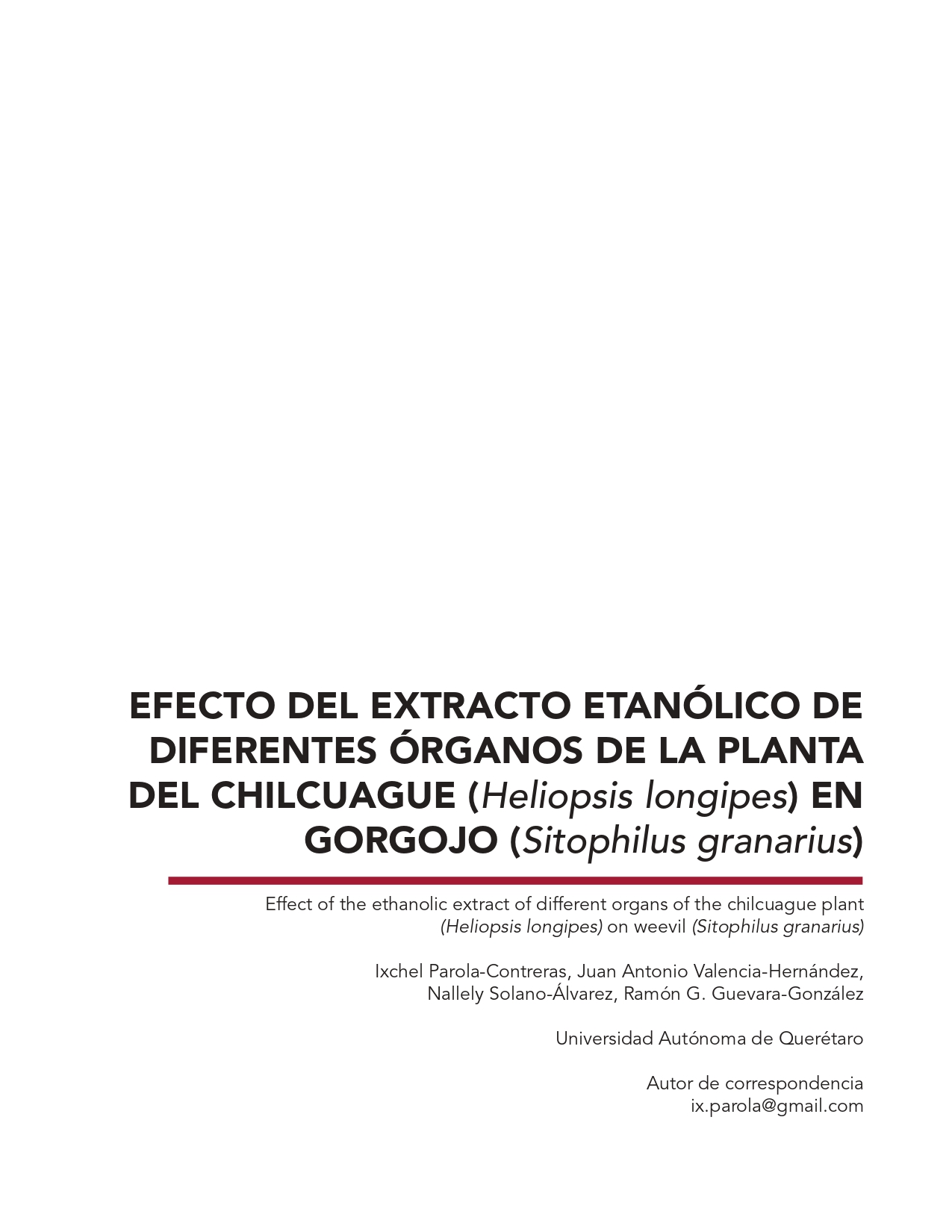Abstract
Pests in crops are a problem that farmers are constantly faced with, even when fields have already been harvested and it is necessary to store the product; those that are commonly known as weevils are a pest of grain storage and are still difficult to control, since most of the products that are marketed are very toxic for those who apply them and in many cases with residuality. Hence the need to generate new products based on alternative compounds that are less toxic and friendly with the environment. Meanwhile in this project, different organs of the plant were evaluated; as well as, two chilcuague plants from different locations. In conclusion, the result obtained was a mortality of almost 100% with the macerate of the plant from Concá. The proposal of this work is that macerates from different parts of the chilcuague plant are usable as an anti-weevil product in grain stores.
This work is licensed under a Creative Commons Attribution-NonCommercial 4.0 International License.

